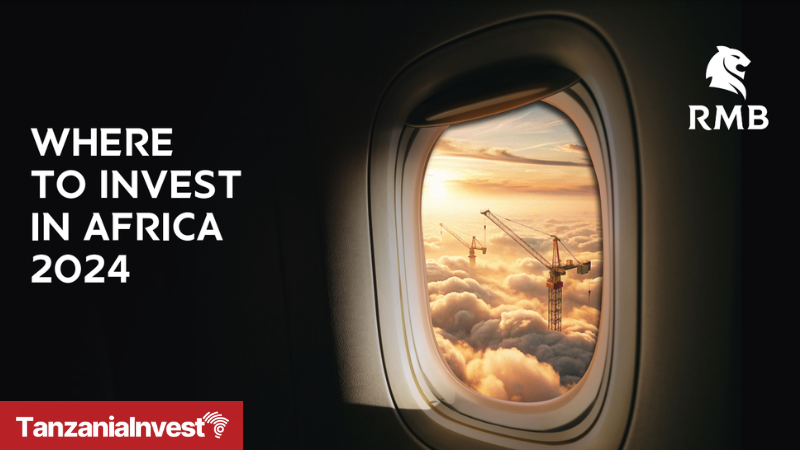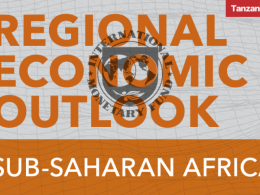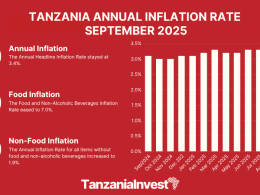According to the Rand Merchant Bank (RMB) Where to Invest in Africa 2024 Report, Tanzania ranks as the 12th best investment destination out of 31 African countries analyzed.
The report, published by RMB of South Africa, provides key insights for businesses, investors, and policymakers, helping them evaluate market opportunities across Africa.
The 31 countries analyzed in the report include Egypt, South Africa, Morocco, Ghana, Tunisia, Senegal, Nigeria, Algeria, Kenya, Ethiopia, Botswana, Rwanda, Côte d’Ivoire, Benin, Namibia, Uganda, Zambia, Gabon, Madagascar, Mozambique, Angola, Malawi, the Democratic Republic of Congo (DRC), Cameroon, Lesotho, Republic of Congo, Eswatini, Zimbabwe, and the islands of Seychelles and Mauritius.
Key Metrics and Ranking Criteria
The RMB report evaluates countries based on 20 parameters grouped into four main pillars:
- Economic Performance and Potential: Evaluates current conditions and future growth prospects through metrics like GDP, GDP per capita, GDP growth forecast, population size, population growth, and urbanization.
- Market Accessibility and Innovation: Assesses how easily businesses can enter markets and create new technologies or services, considering economic complexity, innovation, connectedness, and import concentration.
- Economic Stability and Investment Climate: Focuses on legal structures, political stability, inflation, corruption, economic freedom, and forex stability.
- Social and Human Development: Measures factors like education, healthcare, unemployment, income inequality, and overall human development.
These metrics are sourced from reputable organizations such as the World Bank, the International Monetary Fund (IMF), and Transparency International, with the most recent data available from 2022.
Tanzania’s Performance Across the Four Pillars
Tanzania performed strongly in the Economic Performance and Potential pillar, ranking 4th, thanks to a GDP of $79.4 billion, a GDP per capita of $3,099, and a GDP growth forecast of 6.2%, which is one of the highest in Africa according to the IMF.
In the Economic Stability and Investment Climate pillar, Tanzania ranks 9th, underscoring the country’s reliable economic environment.
The Social and Human Development pillar places Tanzania in 12th position. The country’s population stands at 65.5 million, with a 3.1% annual growth rate and an urbanization rate of 37%.
Tanzania faces challenges in Market Accessibility and Innovation, where it ranks 20th, largely due to its lower Economic Complexity Index (ECI) of -0.91, which signals limited diversification into advanced, high-tech industries.
Comparison with Regional Peers
In comparison to other East African nations, Tanzania ranks 2nd, just behind Kenya, which holds the 11th position overall. Kenya’s GDP is $108.9 billion, with a GDP growth forecast of 5.2% and an inflation rate of 6.4%.
Tanzania, on the other hand, has a higher GDP growth forecast of 6.2% and a lower inflation rate of 3.8%.
Other East African countries include Uganda, which ranks 19th with a GDP of $51.8 billion, a population of 47.25 million, and an unemployment rate of 4%.
Rwanda is ranked 15th, with a GDP of $14 billion, a population of 13.78 million, and an unemployment rate of 12.8%.
Overall Rankings in Africa
Seychelles holds the top spot as the best investment destination in Africa, followed by Mauritius and Egypt in 2nd and 3rd places, respectively. The complete ranking of the 31 countries in the RMB report is as follows:
- Seychelles
- Mauritius
- Egypt
- South Africa
- Morocco
- Ghana
- Tunisia
- Senegal
- Nigeria
- Algeria
- Kenya
- Tanzania
- Ethiopia
- Botswana
- Rwanda
- Côte d’Ivoire
- Benin
- Namibia
- Uganda
- Zambia
- Gabon
- Madagascar
- Mozambique
- Angola
- Malawi
- DRC
- Cameroon
- Lesotho
- Republic of Congo
- Eswatini
- Zimbabwe
Rising Investments in Tanzania
The report comes as Tanzania experiences a surge in investment, driven by the Tanzania Investment Center (TIC). The number of registered investment projects has increased by 91.6%, from 369 in the 2023/24 fiscal year to 707 in 2024/25. The total value of these projects has also risen by 21.6%, reaching $6.561 billion.
This growth is expected to create 226,585 new jobs, a massive 320.61% increase from the 53,871 jobs recorded in the previous year.
The largest share of investment has been in the manufacturing sector, with 313 projects worth $2.462 billion. The transport sector follows with 128 projects valued at $1.035 billion.
Other significant investments have been made in commercial building construction, tourism, and agriculture, highlighting the diverse and dynamic nature of Tanzania’s investment landscape.










